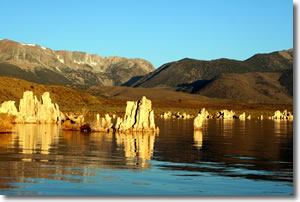My Life Changing Field Trip
by Richard Hilton
Professor, Earth Sciences Dept., Sierra College
When I graduated from high school and was working as a grocery clerk, I immediately enrolled at College of Marin, the local “Junior College,” because my high school grades were not good but I still felt I wanted to pursue a college education. I floundered there (for four years) with a cumulative 2.0 grade point average until I flunked algebra and found myself ripe for the military draft. I enlisted.

During my tenure at College of Marin I enrolled in a one-week Geology/Biology field trip to Death Valley over Spring break. This was the most enlightening experience of my life and it changed it forever. The trip took me to totally foreign environments: the Mojave and Great Basin deserts. Here we saw giant lilies called Joshua Trees with huge white flowers pollinated by moths at night. We learned about cacti and creosote. I found my first Desert Tortoise, who was eating the flowers of a Sand Verbena. I climbed my first sand dune, jumped off the leeward side, and got sand down my shorts. I found some of my first fossils—the stems of 300 million year old animals called sea lilies (crinoids).
Evening recap
Every evening we sat around the campfire and summarized all the natural science we encountered that day. We keyed out flowers and later we looked through telescopes at stars and planets. I slept in the open without a tent and watched the shooting stars and felt the soft pads of a Kangaroo mouse’s feet as he walked across my folded hands. The coyotes howled in the night as a kit fox sniffed around our camp. The baby barn owls tucked in the hole in the bank kept me awake for a while as they begged for the food their mother had caught. But I was tired and warmly happy and anxious for the day to come as I dozed to the smells and sounds of the desert night.

We studied alluvial fans, tufa towers, fault scarps, anticlines, synclines, turtlebacks, playas, evaporites, yardangs, pluvial shorelines, boudins, wine glass canyons, fault breccias, slickensides and on and on through a multitude of scientific terms. But we knew them and we understand them because we were there and we saw them and we touched them. We even tasted a few. It was the experience that we learned from and here 49 years later I can tell you every detail of that trip. The field is where scientists are born.
Model teachers
I studied my teachers. I studied Al Molina a Mexican who in spite of the odds of growing up poor in Stockton had gotten a masters degree in Biology and he was tops in his field. I learned his botany and later his marine biology but I learned his love of nature and that was best. I studied Steve Bruff the geologist who seemed to know the story behind the land and could tell me what the rocks meant as well. I remember thinking; “what a wonderful thing to have all that knowledge and love of nature and what a gift to be able to pass it on to others. Boy if I could only be like them”. They and the field trip were my inspiration. Now in my 38th year of teaching natural science and after uncountable field trips I realize that without that trip I may have stayed a grocery clerk.
Field trips are the heart and soul of natural science. Without them science it is just words.
